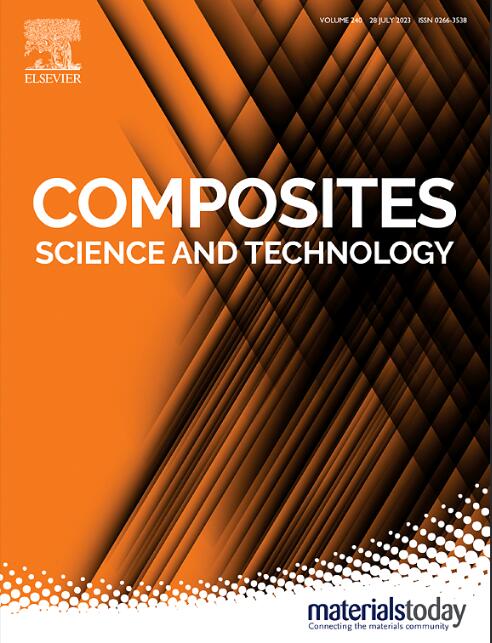基于机器学习的短纤维增强聚合物复合材料双轴失效包络预测
IF 8.3
1区 材料科学
Q1 MATERIALS SCIENCE, COMPOSITES
引用次数: 0
摘要
短纤维增强聚合物复合材料(SFRPs)是由分散在聚合物基体中的短纤维和不连续纤维组成。本研究提出了利用人工神经网络(ANN)确定SFRP试件的双轴破坏包络。破坏包络线定义了在双轴加载应力下的决策边界,将内部应力状态区分为生存状态,外部应力状态区分为破坏状态。SFRPs有限元分析的复杂建模和高成本使得确定失效包络线的计算成本很高。本研究使用人工神经网络作为替代模型来预测SFRP试件的双轴破坏包络。采用第一步伪颗粒破坏模型,采用两步均质法提取SFRP试样的破坏包络,用于训练和测试人工神经网络模型。该数据库补充了文献中可用的双轴试验和有限元分析结果的实验数据。以一种分散有短弹性纤维的弹塑性聚合物基体为研究对象。纤维和基体的强度参数以及微观结构的几何参数在一定范围内变化,以建立用于人工神经网络训练的数据集。利用人工神经网络模型预测了两种不同的未见sfrp的失效包络。将人工神经网络的预测结果与文献中报道的模拟和实验结果进行了比较。此外,还进行了参数化研究,以研究SFRP的关键参数(如体积分数、长径比和纤维取向)的影响。本文章由计算机程序翻译,如有差异,请以英文原文为准。

A machine learning-based prediction of biaxial failure envelope of a short fiber-reinforced polymer composite
Short-fiber reinforced polymer composites (SFRPs) consist of short and discontinuous fibers dispersed in polymer matrices. This study presents the determination of biaxial failure envelope of an SFRP specimen using an artificial neural network (ANN). The failure envelope defines the decision boundary under biaxial loading stress, distinguishing stress states inside as survival and outside as failure. The complex modeling and the high cost associated with the FE-analysis of SFRPs make the determination of the failure envelope computationally expensive. This study uses an ANN as a surrogate model to predict the biaxial failure envelopes of an SFRP specimen. The failure envelopes used for training and testing the ANN model are extracted for the SFRP specimen using a two-step homogenization, employing the first pseudo-grain failure model. The database is supplemented with experimental data from biaxial tests and FE analysis results available in the literature. An elastoplastic polymer matrix dispersed with short elastic fibers is taken for analysis. The strength parameters of the fiber and matrix and the geometrical parameters of the microstructure are varied over a range to develop a dataset for ANN training. The failure envelopes are predicted for two different unseen SFRPs using the ANN model. The ANN predictions are compared with the simulation and experimental results reported in the literature. Additionally, a parametric study is performed to investigate the effect of the key parameters of the SFRP, such as the volume fraction, aspect ratio, and orientation of the fiber.
求助全文
通过发布文献求助,成功后即可免费获取论文全文。
去求助
来源期刊

Composites Science and Technology
工程技术-材料科学:复合
CiteScore
16.20
自引率
9.90%
发文量
611
审稿时长
33 days
期刊介绍:
Composites Science and Technology publishes refereed original articles on the fundamental and applied science of engineering composites. The focus of this journal is on polymeric matrix composites with reinforcements/fillers ranging from nano- to macro-scale. CSTE encourages manuscripts reporting unique, innovative contributions to the physics, chemistry, materials science and applied mechanics aspects of advanced composites.
Besides traditional fiber reinforced composites, novel composites with significant potential for engineering applications are encouraged.
 求助内容:
求助内容: 应助结果提醒方式:
应助结果提醒方式:


